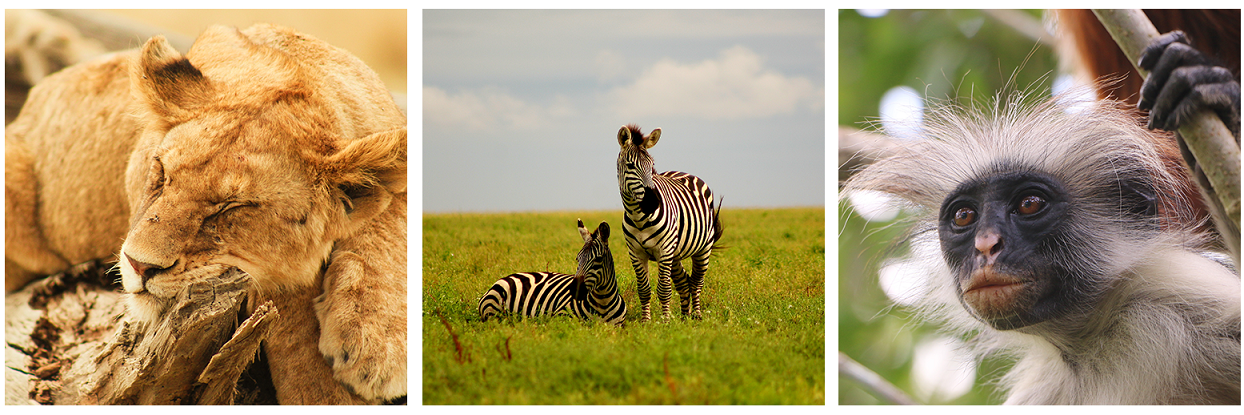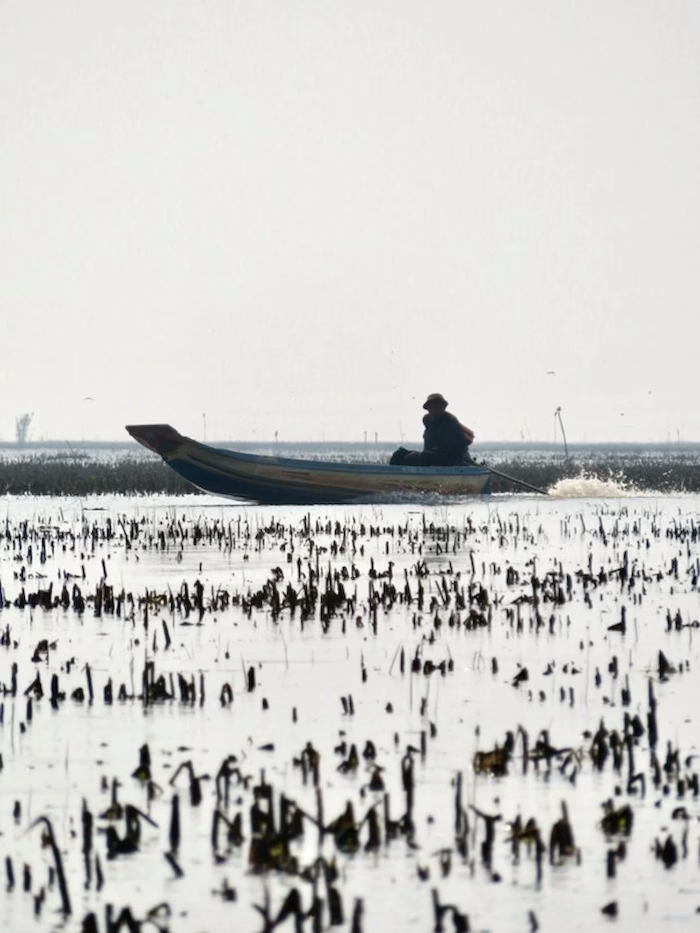
By: Lora Doughty
Where the Wild Things Are
Are you catching the reference to Maurice Sendak’s classic where a rambunctious little boy in a wolf costume sent to bed without dinner triggers an adventure to a faraway land where the Wild Things live?
While SFS study abroad programs don’t require you to wear a wolf costume and you won’t go to bed without dinner, you will have an adventure in a faraway land and there will be wild things. With study abroad programs in ten countries, five continents, and myriad regional ecosystems, there’s the possibility to see hundreds, if not thousands, of different animal species across our field sites.
As decades of SFS alumni can attest, “the elephants are not always where you expect them to be.” One of the sheer joys of an SFS program is the direct interaction with the natural world, which unlike your local zoo, does not operate on a planned and coordinated schedule. Every student group has their own unique wildlife moments and stories to share.
Immediately upon setting foot here I realized that there was hardly a single species I recognized from home.– Kristoff, SFS Australia
You probably can’t attend every SFS study abroad program, so we’ve created this guide to some of the charismatic species in each country.
If you want to learn more about the species we’ve listed below, check out the following resources:
- IUCN Red List of Threatened Species: Established in 1964, it’s the world’s most comprehensive source of information on the global extinction risk to specific animal, fungus, and plant species.
- Encyclopedia of Life: With a mission to increase awareness and understanding of living nature, this massive (and freely accessible) database has the goal of providing information on each of the 1.8 million species of plant, animal, and other forms of life on Earth. While the project is ongoing, head over and we bet you’ll find something interesting.
AFRICA
Kenya | Tanzania
Africa is perhaps the most iconic place on Earth when it comes to charismatic megafauna (the big guys), but don’t discount some of the smaller species like the dik dik, that are equally fascinating and help balance the ecosystem. If you’re an animal lover, it doesn’t get much better than the SFS programs in Kenya and Tanzania.
Here’s a list of some of the species that you might see on our Kenya and Tanzania study abroad programs:
lions • elephants • giraffes • zebras • wildebeest • hippos • rhinos • warthogs • dik diks • gazelles • baboons • monkeys • cheetahs • leopards • buffalo • waterbucks • elands • secretary birds • flamingos • crocodiles • lizards • impalas • jackals • hyenas • wild dogs • lovebirds • lilac-breasted rollers • antelopes • ostriches • macaques • chimpanzees • crowned cranes • guineafowl • rock hyrax • dung beetles • weavers • okapi • gerenuk • kudu • and many more!

CENTRAL AMERICA
Costa Rica | Panama
Costa Rica, a country about the size of West Virginia, is home to an astounding 5% of Earth’s species. That’s nearly 100,000 different species found in the country’s dense forests, mountainous landscapes, and coastal areas. West Virginia? Less than 5,000 species. And, if you’re a bird lover, you’ll find over 900 species – many with brilliantly colored plumage or, in the case of the toucan, an impressive beak! The globally popular tree-dwelling sloth can also be found here, and many students have spotted one on the SFS campus.
Here’s a list of some of the species that you might see on our Costa Rica study abroad programs:
sloths • toucans • hummingbirds • white-faced capuchins • resplendent quetzal • coatis • lizards • geckos • motmots • kiskadees • variegated squirrels • frogs • boa constrictors • deer • ocelots • iguanas • howler monkeys • tapirs • snakes • armadillos • crocodiles • bats • peccaries • turtles • and many more birds, land mammals, reptiles, and amphibians!

Even though they share a border, our Costa Rica programs focus on terrestrial species and ecosystems while our programs in Panama focus on both terrestrial and marine environments. Based in the Bocas del Toro archipelago, home to dolphins, sloths, coral reefs, and many fish species, students also visit the Pacific coast and mainland Boquete region with its lush forests, coffee plantations, and the Barú Volcano.
Here’s a list of some of the species that you might see on our Panama study abroad programs:
sloths (two and three-toed) • bottlenose dolphins • sea stars • parrotfish • spotted eagle ray • stingrays • poison dart and tree frogs • capuchins • bats • toucans • tanagers • monkeys • corals (over 5 different species) • giant anemones • queen conch • sea urchins • snakes • sea turtles (leatherback and loggerhead) • butterflyfish • bar jacks • great barracuda • nurse sharks • iguanas • frigatebirds • great blue heron • kingfishers • sponges • brittle stars • sea fans • jellyfish • hummingbirds • parrots • angelfish • damselfish • porkfish • grunts • and many more fish, corals, birds, amphibians, and other sea and land creatures!

SOUTH AMERICA
Chile | Peru
Our southernmost program location, based in Patagonian Chile, is nestled in a landscape of dramatic mountain peaks, ice-blue glaciers, narrow fjords, volcanoes, and islands. With so many different landscapes to explore, there is a great mix of terrestrial and marine species to be found such as the elusive puma, gentle guanaco, giant rhea, and majestic king penguin.
Here’s a list of some of the species that you might see on our Chile study abroad programs:
king penguins • guanaco • puma • whales (humpbacks and blue) • orcas • deer • condors • foxes • rhea • owls • beavers • sea lions • Magellanic penguins • elephant seals • dolphins • flightless ducks • geese • albatrosses • otters • salmon • woodpeckers • sheep • cattle • and many more land and sea dwellers!

The SFS Peru Center is based outside of Iquitos, the gateway to Peru’s northern Amazon rainforest and the world’s largest city that cannot be reached by road. This lowland area has dense forest cover, winding rivers, and is home to a vast diversity of species. Students attending the semester program also visit the highlands around Cusco, home to Machu Picchu, where a variety of higher elevation species can be found.
Here’s a list of some of the species that you might see on our Peru study abroad programs:
sloths (two and three-toed) • pink river dolphins • macaws • jaguars (elusive) • anacondas • caimans • poison dart and tree frogs • tamandua anteaters • coatis • squirrel monkeys • manatees • capybaras • agoutis • tapirs • pygmy marmosets • capuchins • boa constrictors • turtles • harlequin toads • toucans • parrots • cotingas • kingfishers • hoatzins • piranhas • condors • llamas • alpacas • vicuñas • bears (elusive) • and many more primates, birds, and other river species!

ASIA
Bhutan | Cambodia
Nestled high in the Himalayan mountains, dense forests and glacial rivers cover a landscape known for its outstanding biodiversity and range of ecosystems. In the spring in Bhutan, blooming rhododendrons and purple Jacaranda trees add a pop of color. There’s a national preserve near Thimphu where you can observe takin, Bhutan’s endearing national animal, and the country’s high mountain passes are home to numerous big cat species.
Here’s a list of some of the species that you might see on our Bhutan study abroad programs:
black-necked cranes • takins • capped langurs • tigers (camera traps) • snow leopards (camera traps) • macaques • barking deer • leopards (camera traps) • golden cats (camera traps) • rufous-necked hornbills • golden langurs • wild dogs (camera traps) • red pandas (rare) • martens • and many more bird and land mammal species!

South of Bhutan, out of the Himalayas and situated between Thailand, Laos, Vietnam, and the Gulf of Thailand, sits Cambodia. Here, remnants of 12th-century temples share the landscape with wild forests, Buddhist monasteries, and small villages. The country has a diversity of ecosystems ranging from the mighty Mekong River and Tonlé Sap Lake to the dense highland forests of Mondulkiri. Cambodia is home to rare species like the Asian elephant, sun bear, and Irrawaddy river dolphin.
Here’s a list of some of the species that you might see on our Cambodia study abroad programs:
Asian elephants • sun bears • river dolphins • gibbons • macaques • pangolins (rare) • civets • sambar deer • bantengs • green peafowl • leopard cats • pythons • porcupines • tortoises • cranes • painted storks • herons • eagles • ibis • kingfishers • lesser and greater adjutants • alligators • catfish • mud carps • green-billed malkoha • blue-tailed bee eater • barbs • featherbacks • tiger botias • eels giant pangasius • sheatfish • and many more fish, birds, reptile, and other land creatures!

CARIBBEAN + OCEANIA
Turks & Caicos Islands | Australia
There is a magic to marine environments and the Turks & Caicos Islands (TCI) are no exception. Home to vibrant coral reefs, dramatic sea walls, a deep ocean trench, mangrove forests, and extensive seagrass beds, the TCI is a fascinating place to explore a stunning diversity of sea life and terrestrial island dwellers. This island chain sits at the edge of the Atlantic Ocean and is one of our most popular program locations.
Here’s a list of some of the species that you might see on our TCI study abroad programs:
nurse and reef sharks • eagle rays • sea turtles • angelfish • butterflyfish • surgeonfishes • octocorals like sea fan • giant barrel sponges • mangrove upsidedown jellies • ospreys • southern sting rays • kingfishers • lizards • lemon sharks • branching and pillar corals like staghorn and elkhorn • barracudas • damselfish and chromis • parrotfish • squirrelfishes • lionfish • brain corals • shrimp • lobsters • conch • flamingo tongues • squid • octopus • porcupinefish • wrasses • goatfish • herons • pelicans • flamingos • frigatebirds • geckos • iguanas • sea urchins • sea cucumbers • tunicates • sea slugs (if you’re lucky!) • and many more fish, corals, birds, and other sea creatures!

On the opposite side of the planet from TCI (well, sort of) sits Australia. Here’s a fun fact – did you know that Australia has the oldest rainforest on the planet? And that it’s estimated to be 180 million years old? The SFS Center is located just a hop and a skip from that rainforest – the ancient Daintree – and we’re also near the world’s most iconic reef – the Great Barrier Reef. Students on our Australia programs contribute to iNaturalist – one of the largest citizen science apps for biodiversity tracking. While we’ve only been tracking since 2019, you can check out the impressive 1700+ species we’ve already identified.
Here’s a list of some of the species that you might see on our Australia study abroad programs (click on linked animals to see an SFS iNaturalist observation):
cassowaries • tree kangaroos • yellow bellied gliders • platypus • crocodiles • turtles (freshwater and sea dwelling) • reef sharks • stingrays • tree frogs • lizards (including a forest dragon!) • brush turkeys • emus • kingfishers • lizards • echidnas • wallabies • flying foxes • kangaroos • snakes • clown fish • Māori wrasses • sea stars • hard and soft corals • crabs • sea cucumbers • skinks • cockatoos • cranes • pelicans • geckos • mudskippers • rhinoceros beetle • Hercules moth • and many more marsupials, birds, fish, and other land and sea creatures!

Ready to figure out which SFS program is right for you? Head over to our Program Finder and explore! Ready to take the next step towards your study abroad adventure? Start your free application today.
Related Posts

Framing Prek Toal: Photography, Conservation, and Life on the Tonle Sap

